Critical Image Forum Dialogue Series: Marianne Nicolson
-
Marianne Nicolson
ArtistMarianne Nicolson (Kwakwa̱ka̱’wakw, Musga̱maḵw Dzawada̱’enux̱w First Nations, b. 1969) is an artist and activist of the Musga̱maḵw Dzawada̱’enux̱w Nations who are part of the Kwakwa̱ka̱’wakw (Kwak’wala speaking peoples) of the Northwest Coast. She is trained in both traditional Kwakwa̱ka̱’wakw forms and culture and contemporary gallery and museum-based practice. Her practice is multi-disciplinary, encompassing photography, painting, carving, video, installation, monumental public art, writing and speaking. She works as a Kwakwaka’wakw cultural researcher and historian, as well as an advocate for Indigenous land rights. She holds a BFA from the Emily Carr University of Art and Design (1996), an MFA (2000), MA in Linguistics and Anthropology (2005) and PhD in Linguistics and Anthropology with a focus on space as expressed in the Kwak’wala language (2013) all from the University of Victoria. Solo exhibitions include the Art Gallery of Greater Victoria (2008); Artspeak, Vancouver (2006); Esquimalt Municipal Hall (2004); Thunder Bay Art Gallery (2002); National Indian Art Centre, Hull (2001); Campbell River Public Art Gallery (2000) and Or Gallery, Vancouver (1992). Group exhibitions include the 17th Biennale of Sydney (2020); the Morris and Helen Belkin Art Gallery, Vancouver (2020); the Vancouver Art Gallery (2019-20); the National Gallery of Canada, Ottawa (2018-19) and the National Museum of the American Indian, New York (2017-19), among others. Major monumental public artworks are situated in her home territory of the Musga̱maḵw Dzawada̱’enux̱w First Nation, Vancouver International Airport, the Canadian Embassy in Amman, Jordan and the Canadian Embassy in Paris, France.
Following Nicolson’s Hexsa’a̱m: To Be Here Always, a 2019 project with the Belkin that functioned as research, material, media, testimony and ceremony to challenge the western concept that the power of art as limited to the symbolic, This Is An Emergency Broadcast (2023) is another moment to amplify Indigenous tradition.
Read More
-
Althea Thauberger
ArtistThauberger is an artist and filmmaker and an Associate Professor of Visual Art at the University of British Columbia. Her artistic work involves collaborative research and is primarily concerned with the relationship between community narratives and geopolitical histories. Thauberger has produced and exhibited her work internationally including recent exhibitions at the Contemporary Art Gallery in Vancouver and the Kaunas Biennial in Lithuania.
Read More
EPISODE 1 – Marianne Nicolson: The Photographic act as ceremony and witness
In this online conversation with Althea Thauberger, Musgamakw Dzawada’enuxw artist and activist Marianne Nicolson helps us understand how particular photographic acts, although initiated by Canadian colonial photographers, were used, by those depicted, as opportunities for assertions of political, cultural and territorial sovereignty during the potlatch ban in the early twentieth century. The following images are from Marianne Nicolson’s research archive and are referenced in the conversation.
Critical Image Forum is a collaboration between the Belkin and the Department of Art History, Visual Art and Theory with funding from the UBC Public Humanities Hub.
Recorded on July 20, 2020.
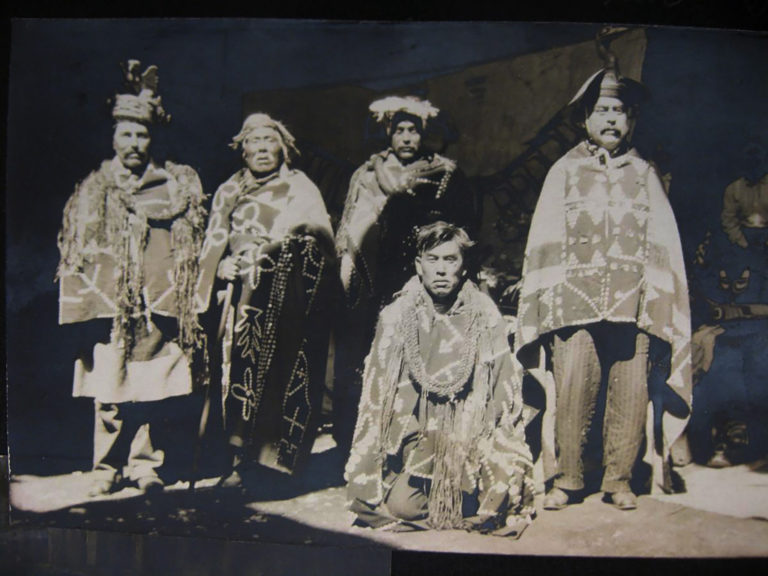
The Musgamakw Dzawada’enuxw Chiefs at the McKenna McBride Commission, 1914. Left to right: Johnny Scow, Copper Johnson, Dick Hawkins, Dick Webber (kneeling), Alec Morgen. Collection of the Royal British Columbia Museum Archives.
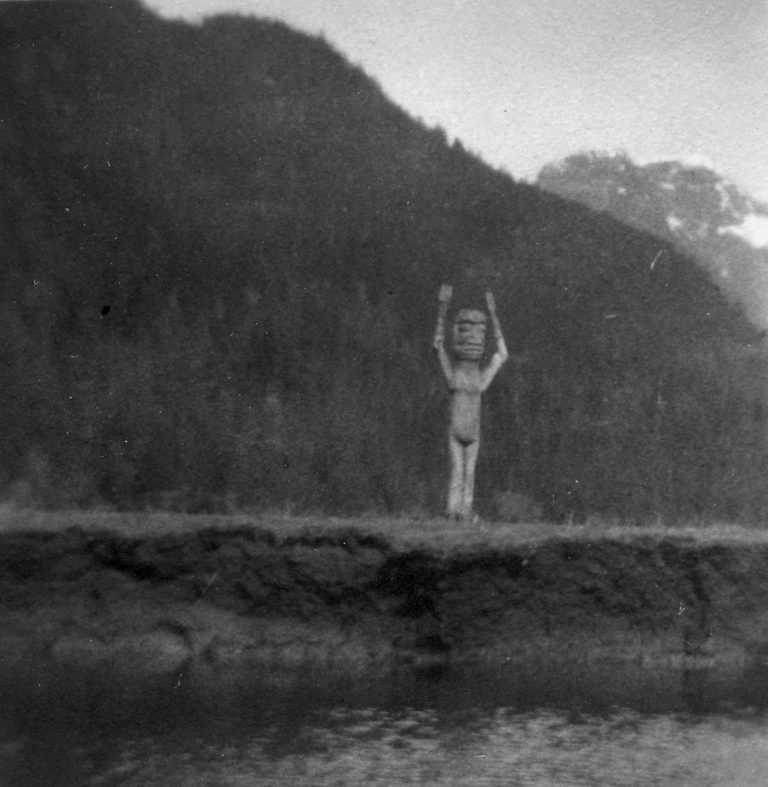
Johnny Scow Pole, Kingcome Inlet, BC, c. 1916. Collection of the Royal British Columbia Museum Archives.
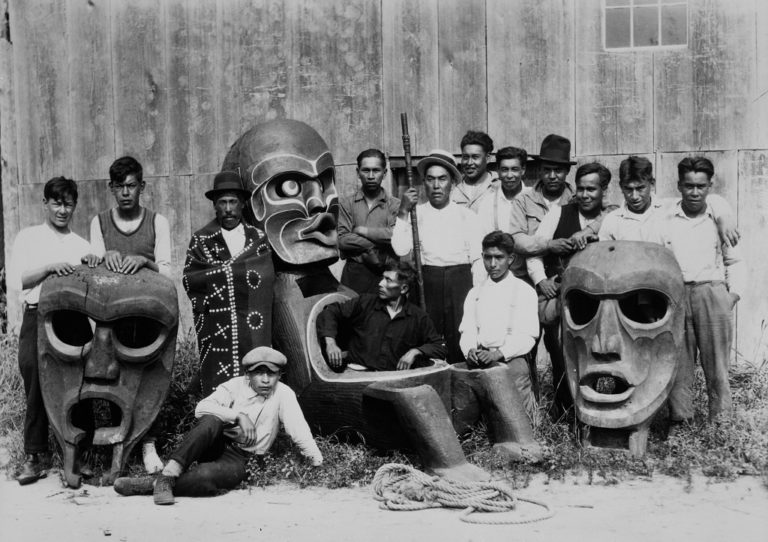
A group of Musgamakw Dzawada’enuxw men poses in and around an enormous Dzunuḵ̓wa feast dish in Gwa’yi, c. 1926. Back row, left to right: Bill Wilson, Sam Webber, Jim Hamdzid, Alex Willie, Dick Webber, Harry Jack, William Webber, Willie Dawson, James King, Albert Dawson, Samuel James. Front row, left to right: Thomas King, Anderson Williams, Alfred Coon. Collection of the Vancouver Public Library VPL 1796.

Chiefs and community members in Gwa’yi (Kingcome Inlet, BC), 1938. Collection of the Anglican Archives of Victoria, British Columbia.

Chiefs and community members in Gwa’yi (Kingcome Inlet, BC), 1938. Collection of the Anglican Archives of Victoria, British Columbia.
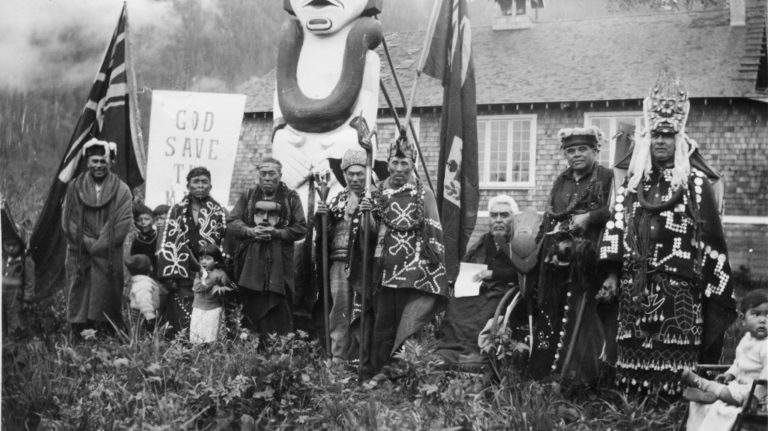
Chiefs and community members in Gwa’yi (Kingcome Inlet, BC), 1938. Collection of the Anglican Archives of Victoria, British Columbia.
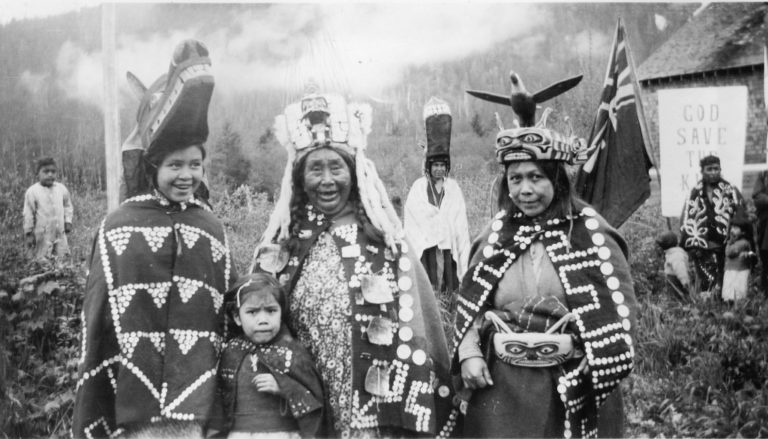
Chiefs and community members in Gwa’yi (Kingcome Inlet, BC), 1938. Collection of the Anglican Archives of Victoria, British Columbia.

Chiefs and community members in Gwa’yi (Kingcome Inlet, BC), 1938. Collection of the Anglican Archives of Victoria, British Columbia.
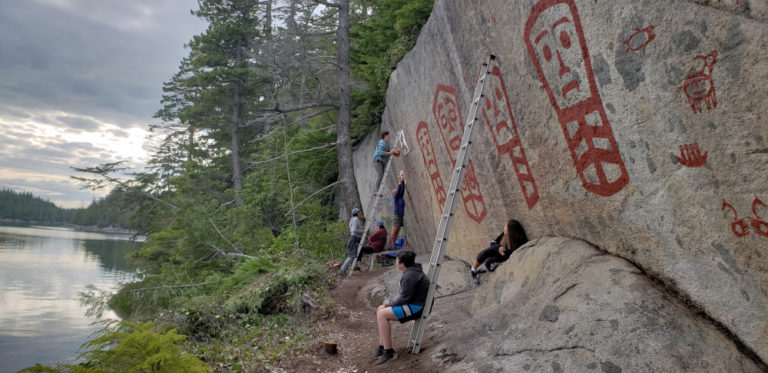
Community Pictograph Project, Musgamakw Dzawada’enuxw Territory, 2019. Photo: Marianne Nicolson.
Visit the Wild Salmon Defence Fund for information on how to assist the Dzawada’enuxw First Nation’s Title Claim.
-
Marianne Nicolson
ArtistMarianne Nicolson (Kwakwa̱ka̱’wakw, Musga̱maḵw Dzawada̱’enux̱w First Nations, b. 1969) is an artist and activist of the Musga̱maḵw Dzawada̱’enux̱w Nations who are part of the Kwakwa̱ka̱’wakw (Kwak’wala speaking peoples) of the Northwest Coast. She is trained in both traditional Kwakwa̱ka̱’wakw forms and culture and contemporary gallery and museum-based practice. Her practice is multi-disciplinary, encompassing photography, painting, carving, video, installation, monumental public art, writing and speaking. She works as a Kwakwaka’wakw cultural researcher and historian, as well as an advocate for Indigenous land rights. She holds a BFA from the Emily Carr University of Art and Design (1996), an MFA (2000), MA in Linguistics and Anthropology (2005) and PhD in Linguistics and Anthropology with a focus on space as expressed in the Kwak’wala language (2013) all from the University of Victoria. Solo exhibitions include the Art Gallery of Greater Victoria (2008); Artspeak, Vancouver (2006); Esquimalt Municipal Hall (2004); Thunder Bay Art Gallery (2002); National Indian Art Centre, Hull (2001); Campbell River Public Art Gallery (2000) and Or Gallery, Vancouver (1992). Group exhibitions include the 17th Biennale of Sydney (2020); the Morris and Helen Belkin Art Gallery, Vancouver (2020); the Vancouver Art Gallery (2019-20); the National Gallery of Canada, Ottawa (2018-19) and the National Museum of the American Indian, New York (2017-19), among others. Major monumental public artworks are situated in her home territory of the Musga̱maḵw Dzawada̱’enux̱w First Nation, Vancouver International Airport, the Canadian Embassy in Amman, Jordan and the Canadian Embassy in Paris, France.
Following Nicolson’s Hexsa’a̱m: To Be Here Always, a 2019 project with the Belkin that functioned as research, material, media, testimony and ceremony to challenge the western concept that the power of art as limited to the symbolic, This Is An Emergency Broadcast (2023) is another moment to amplify Indigenous tradition.
Read More
-
Althea Thauberger
ArtistThauberger is an artist and filmmaker and an Associate Professor of Visual Art at the University of British Columbia. Her artistic work involves collaborative research and is primarily concerned with the relationship between community narratives and geopolitical histories. Thauberger has produced and exhibited her work internationally including recent exhibitions at the Contemporary Art Gallery in Vancouver and the Kaunas Biennial in Lithuania.
Read More
Related
-
Exhibition
11 January 2019 – 7 April 2019
Hexsa’a̱m: To Be Here Always

Working together at Kingcome Inlet in Summer 2018, a group of artists used film, video, social media, weaving, animation, drawing, language and song to address the urgent threats to the land and water. A manifestation of the relationships formed between the participants over this past year, Hexsa’a̱m: To Be Here Always is based on sharing knowledge and respectful collaboration. Simultaneously research, material, media, testimony and ceremony, the exhibit challenges the western concept that the power of art and culture are limited to the symbolic or metaphoric, and that the practices of First Peoples are simply part of a past heritage. As Marianne Nicolson states, “We must not seek to erase the influence of globalizing Western culture, but master its forces selectively, as part of a wider Canadian and global community, for the health of the land and the cultures it supports. The embodied practice of ceremonial knowledge relates to artistic experience – not in the aesthetic sense, but in the performative: through gestures that consolidate and enhance knowledge for positive change.” Hexsa’a̱m: To Be Here Always positions the gallery as an active location for this performance, drawing together many faculties and disciplines of the university in generative exchange.
[more] -
Event
25 Mar 2017, 1 pm
Artist Talk: Marianne Nicolson
Join artist Marianne Nicolson who will talk about two works in the exhibition To refuse/To wait/To sleep, Tunics of the Changing Tide (2007) in the Walter C. Koerner Library and The Sun is Setting on the British Empire (2016) on the facade of the Belkin Art Gallery. Watch the talk online.
[more] -
Exhibition
2017 – 2020
Marianne Nicolson: The Sun is Setting on the British Empire
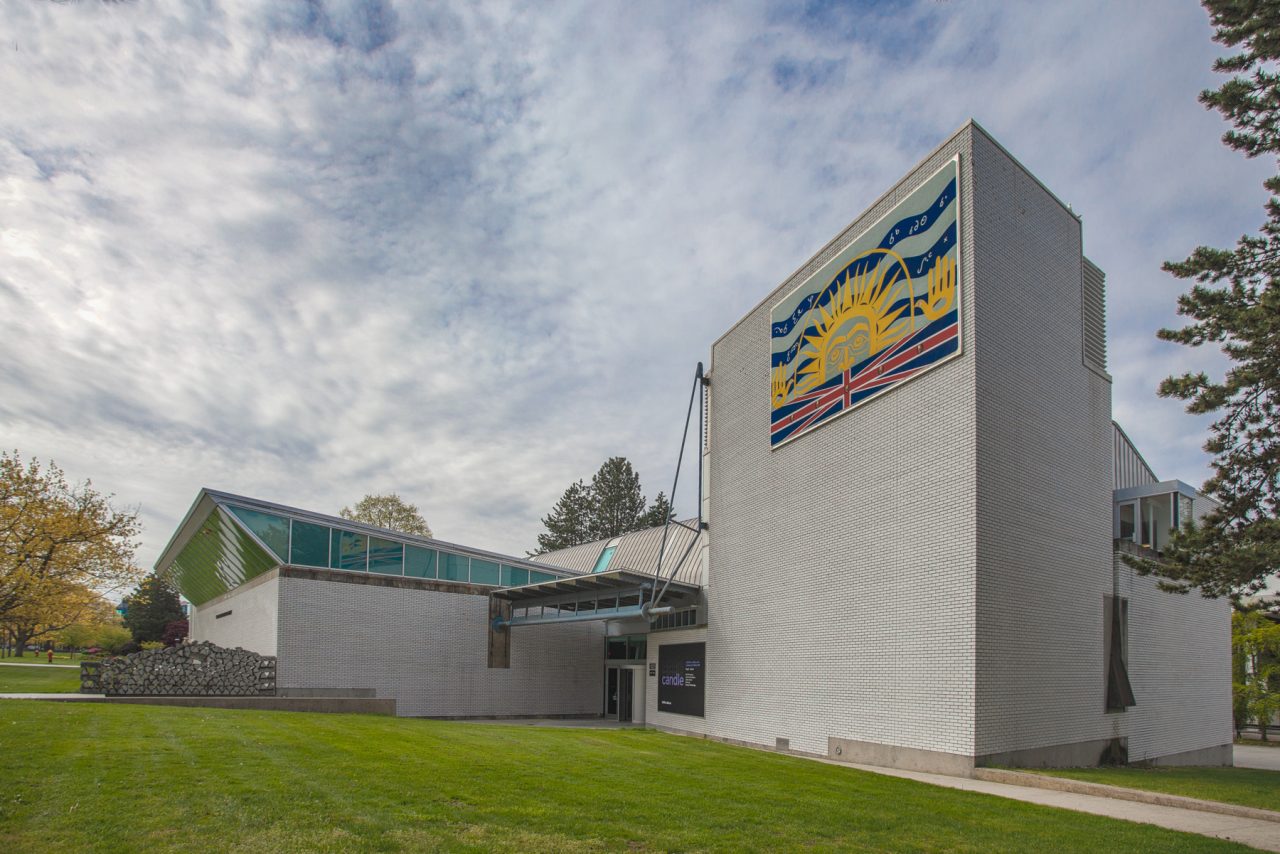
Commissioned for the exhibition To refuse/To wait/To sleep (January 13-April 9, 2017), Marianne Nicolson reworks the British Columbia provincial flag by repositioning and inverting the Union Jack below a setting/rising sun that has been recreated with a Pacific Northwest Coast Indigenous aesthetic.
[more] -
Event
Critical Image Forum Dialogue Series: Paul Weinberg
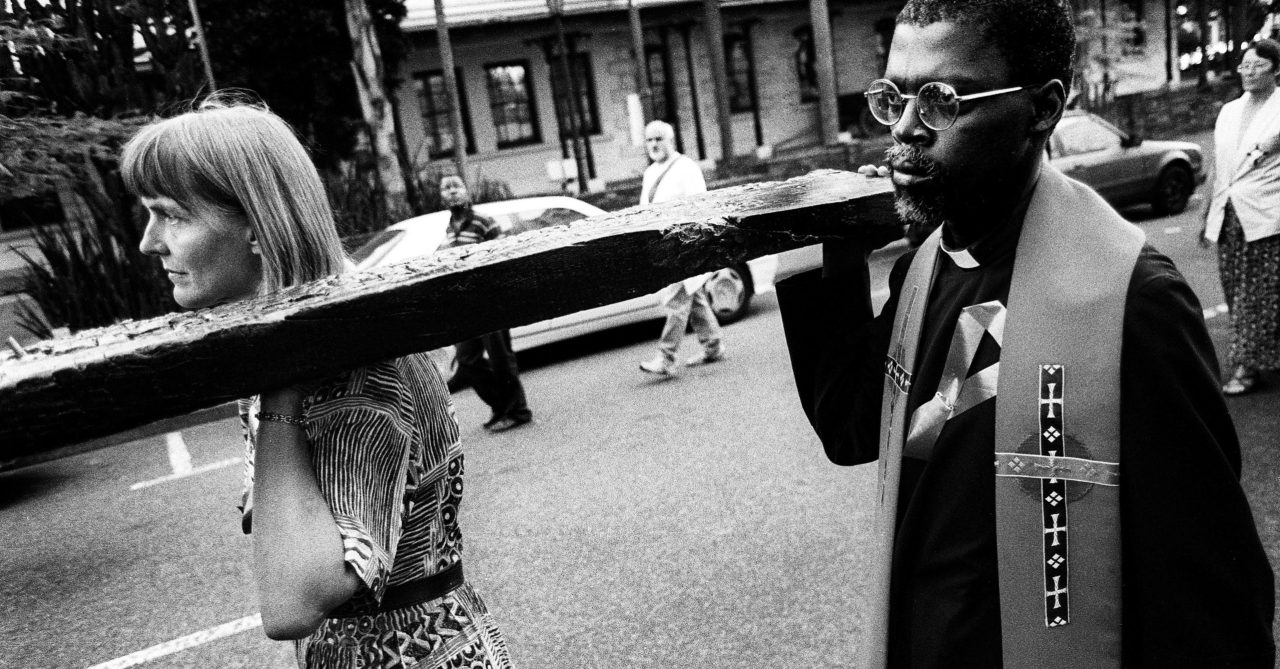
For this second episode of the Critical Image Forum Dialogue Series, Daniela Perez Montelongo is in conversation with South African photographer Paul Weinberg where they discuss key issues pertaining to the role of photography in South Africa during the Apartheid and post-Apartheid eras.
[more] -
Event
Critical Image Forum Dialogue Series: Robert Del Tredici
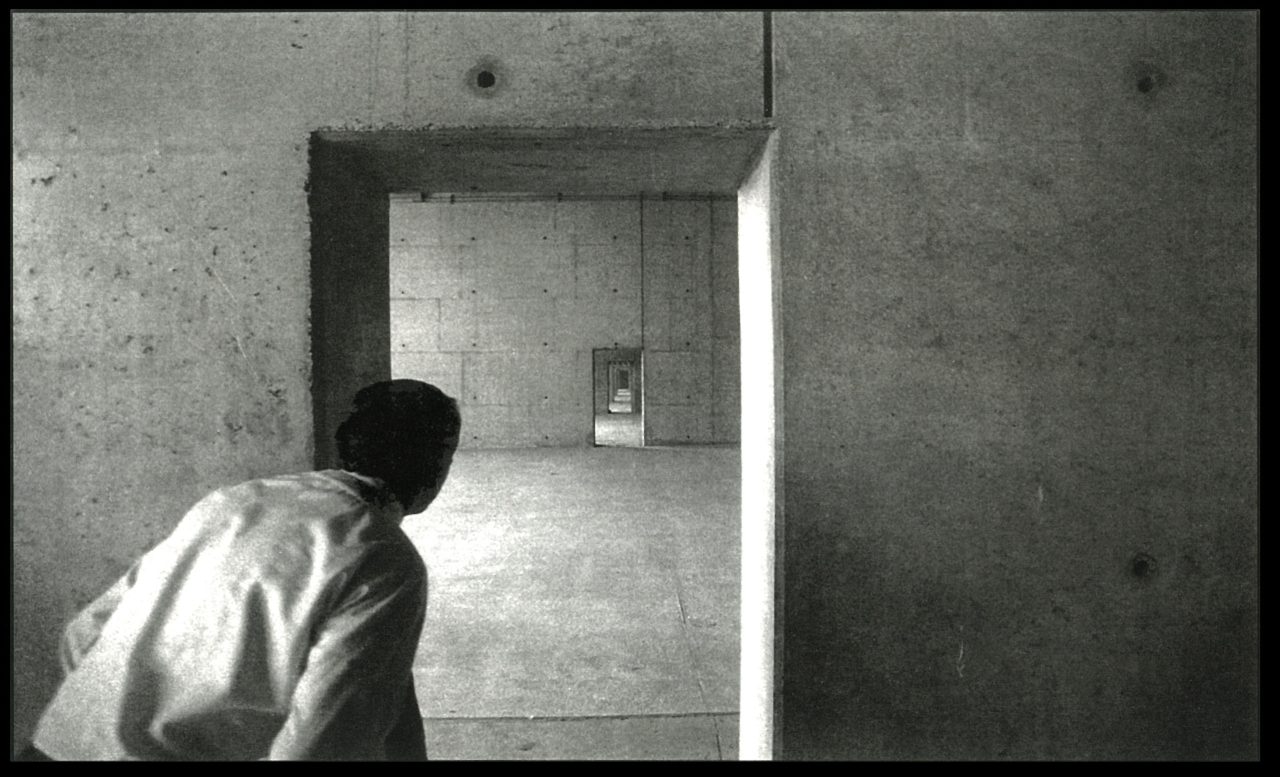
In this episode, through a far-reaching discussion of his illustration and photographic practice, and in dialogue with UBC professor emeritus John O’Brian, Robert Del Tredici touches on political, ethical and philosophical aspects of nuclear technologies and deployments. Through photographic projects from Three Mile Island, Hiroshima, Kazakhstan, Dene Territory in the Canadian Arctic and many other places and sites, Del Tredici’s presentation frames the enormity and devastation of the global nuclear industrial complex, helping to counter its forces of abstraction.
[more] -
Research Project
2021 - Ongoing
Critical Image Forum: Research in Photography and Expanded Documentary

Critical Image Forum is a research project that focuses on the political, ethical, aesthetic and social dimensions of expanded documentary practices. The Forum's primary medium of research is photography, with an interest in how the proliferation of moving images, performance, sound and digital networks have challenged and complicated the veracity of the visual document.
[more] -
Event
Critical Image Forum Dialogue Series: Farah Nosh

From her earliest work in conflict zones to her most recent project documenting fluent speakers of the Haida language in Haida Gwaii, Farah Nosh is known for her intimate, empathic approach to photojournalism and photographic portraiture. In this wide-ranging conversation initiated by UBC journalism MA student Steven Zhu, Nosh discusses her formative experiences with photography as a Geography student at UBC, and subsequently learning photojournalism on assignment in Iraq during the Saddam Hussein era.
[more] -
Event
Critical Image Forum Dialogue Series: Sandra Boss
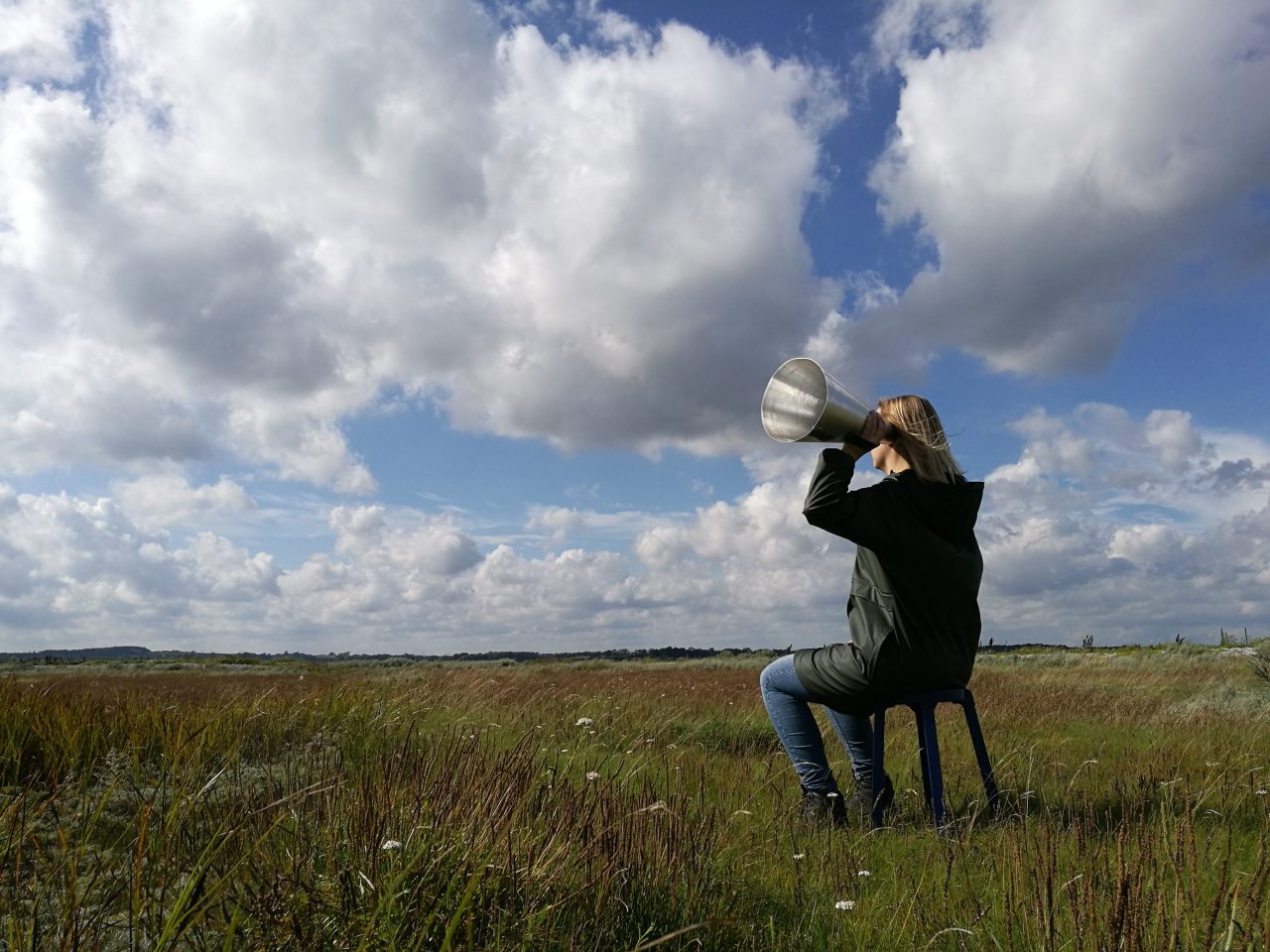
For this episode of the Critical Image Forum Dialogue Series, Tobias Ewé talks with Danish sound artist Sandra Boss about her practice-based research into mid-century German hearing machines, conceptions of hearing and how these shape the listening subject. The discussion takes its outset in Boss's dissertation, Tuning the Ear: Exploring Conditions and Conceptions of Hearing, which is much more than a collection of textual chapters, but a sound art object in and of itself.
[more] -
Event
Critical Image Forum Dialogue Series: UAAC Global Photography
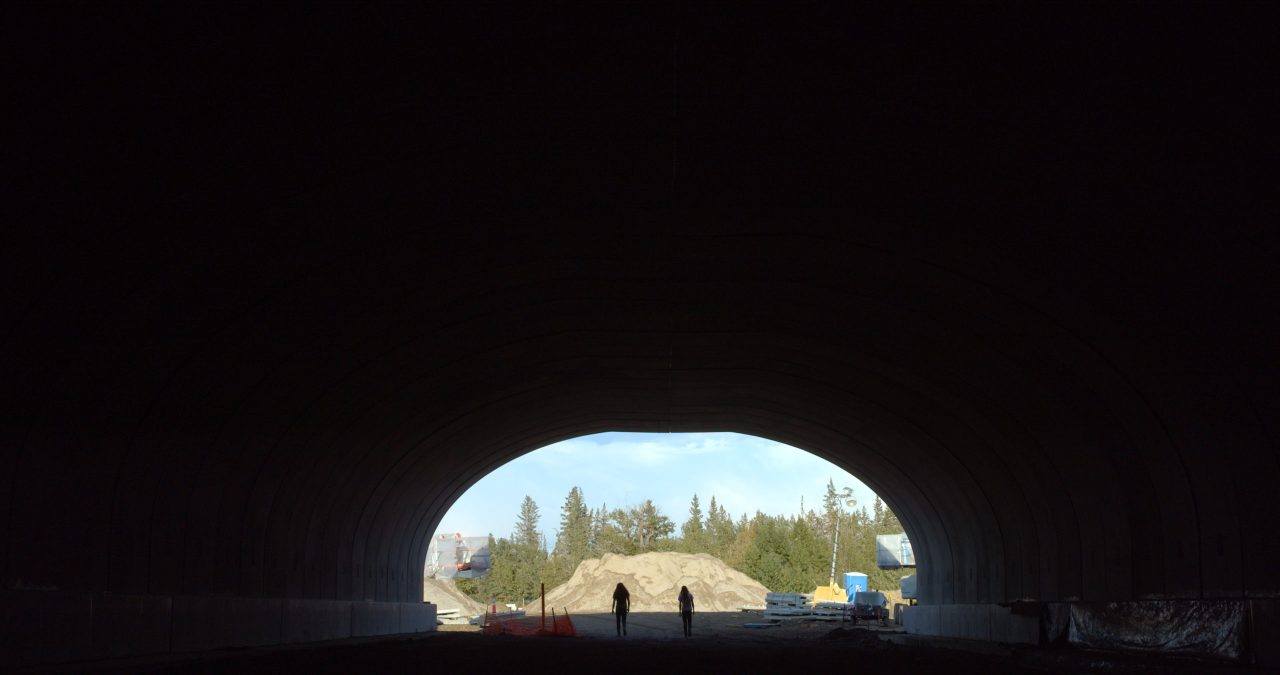
As part of the University Art Association of Canada's online conference, panel chairs Heather Diack (University of Miami) and Terri Weissman (University of Illinois at Urbana Champaign) brought together art historians and artists committed to deepening the discourse of photography studies and expanding its points of reference in Canada Global Photography: Critical Histories.
[more] -
Event
Wednesday and Thursday, 9 and 10 Mar 2022
Critical Image Forum: Artist Talk with Elizabeth M. Webb
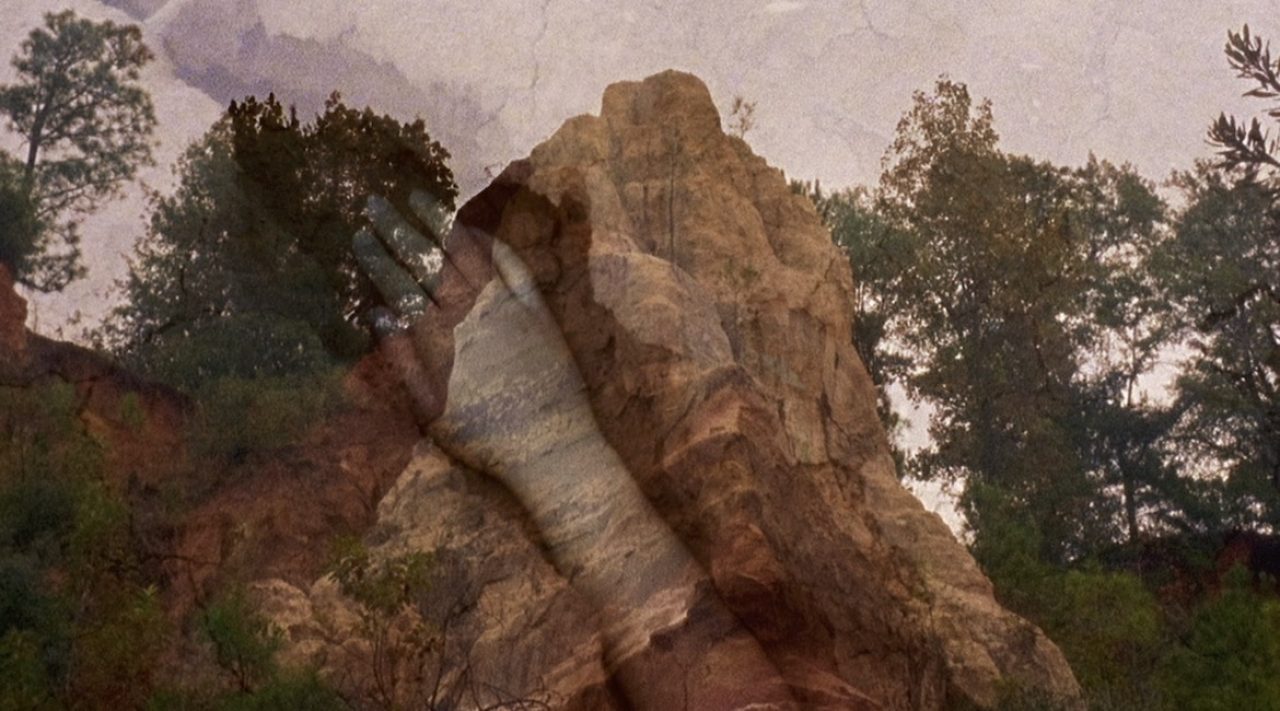
Join multimedia artist Elizabeth M. Webb for a talk and film screening; both events are free and open to the public, no registration is required. Masks and proof of vaccination are mandatory. Webb is an artist and filmmaker originally from Charlottesville, VA. Her work is invested in issues surrounding race and identity, often using the lens of her own family history of migration and racial passing to explore larger, systemic constructs. She has screened and exhibited in the US, United Kingdom, Canada, Japan, Ecuador, Singapore, Switzerland, Mexico, Spain, Austria, Norway and Germany and was a recipient of the inaugural Allan Sekula Social Documentary Award in 2014.
[more]